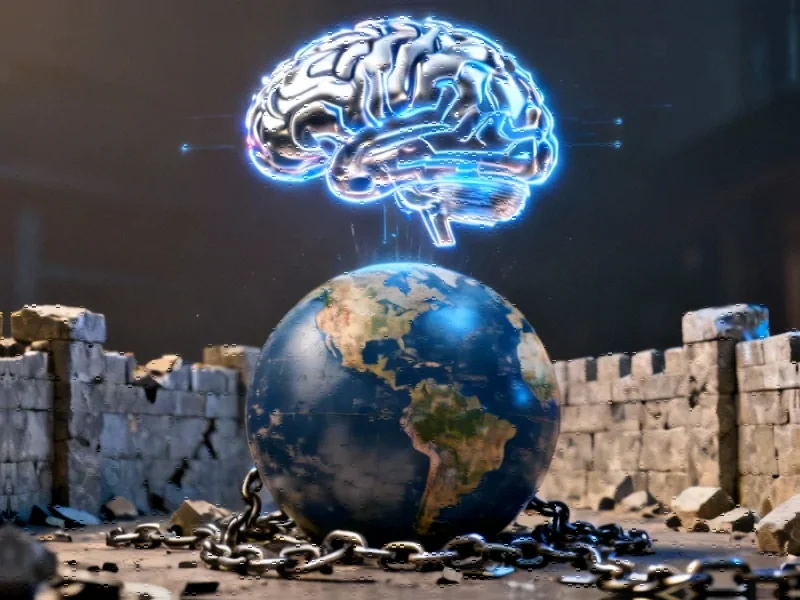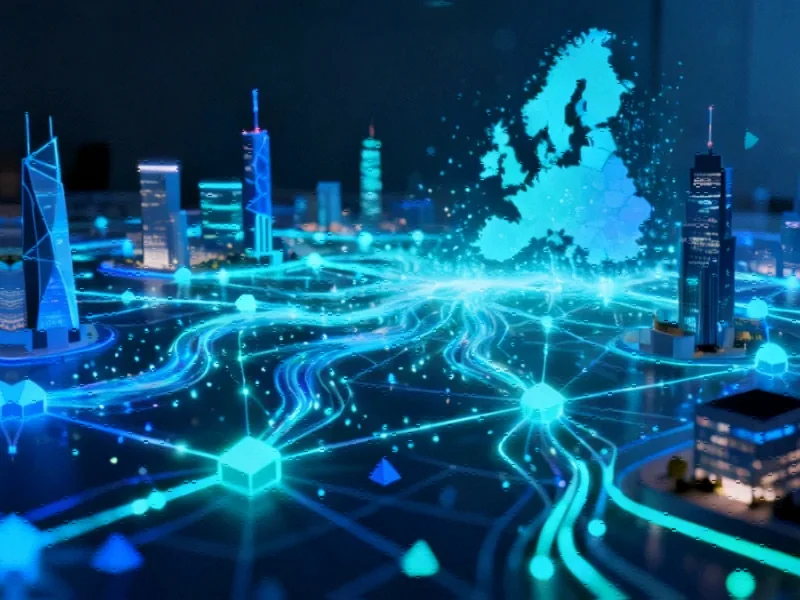Chile’s AI Dilemma: Progress Versus Preservation
In the laboratories of Santiago and the wetlands of Cerrillos, Chile is wrestling with one of the defining technological challenges of our time: how to harness the power of artificial intelligence without sacrificing environmental integrity and social equity. This South American nation of 20 million people has become an unexpected testing ground for how countries worldwide might manage the complex trade-offs inherent in the AI revolution.
While Chilean researchers work feverishly to develop AI systems that reflect Latin American culture and language, community activists are mounting determined opposition to the data centers that power these systems. The tension reflects a global pattern where nations must choose between embracing transformative technology and protecting precious resources. As Chile’s AI ambitions spark environmental and political debates, the country’s experience offers crucial lessons for the international community.
The Research Front: Building Indigenous AI Capabilities
Álvaro Soto, director of the Chilean National Center for Artificial Intelligence, experienced a pivotal moment in 2023 when he tested ChatGPT’s knowledge of Chilean literature. The AI system attributed nearly all of Chile’s literary accomplishments to Pablo Neruda alone, ignoring the country’s rich and diverse literary tradition. “It was a sign of how AI models were not being built to reflect the culture and language of places like Chile,” Soto explained.
This realization sparked a determined effort to develop homegrown AI capabilities. Today, Soto and his team are training their own AI model using overlooked data from across Latin America. Their work represents a crucial attempt to ensure that AI systems understand and reflect Chilean and Latin American contexts rather than simply importing technological frameworks developed elsewhere.
The Environmental Battle: Data Centers and Resource Conflicts
The computing infrastructure required for AI development has become a flashpoint for environmental concerns. In Quilicura, a community on Santiago’s outskirts, Google’s data center initially used approximately 50 liters of water per second for cooling—equivalent to the consumption of roughly 8,000 Chilean households, according to environmental filings from the project’s proposal phase.
Rodrigo Vallejos, a local activist, documented the transformation of once-lush marshlands and lagoons into dry landscapes, even during rainy seasons. “In the end, we risk becoming just an artificial intelligence warehouse for the world,” he lamented, noting that the promised community benefits have been minimal while environmental costs mount.
These challenges mirror global concerns about technology’s environmental footprint, where innovations in fields like water purification technology struggle to keep pace with industrial demands. The tension highlights the urgent need for sustainable approaches to technological infrastructure.
Government Strategy: The Astronomy Model for AI
Facing projections that tech companies planned 30 new data centers around drought-stricken Santiago within four years, Chilean officials developed an innovative approach inspired by the country’s astronomy success. Sebastián Howard of the Ministry of Science, Technology, Knowledge and Innovation led efforts to create a mapping tool identifying locations where data centers would cause minimal environmental and social damage.
Their solution looked north to Antofagasta, a desert city abundant with solar energy. More importantly, they adapted Chile’s successful astronomy policy: in the 1990s, the government required that foreign astronomers building telescopes in Chilean deserts allocate 10% of observation time to local researchers. This transformed Chile into a global astronomy leader.
“If these companies want to invest here, we need to find a way for them to ensure that this infrastructure is also going to be used for our universities and companies,” Howard explained. The strategy represents a sophisticated approach to managing resource systems in the technology sector, balancing foreign investment with domestic capacity building.
Corporate Perspectives and Community Resistance
While the government pushes its northern strategy, tech companies express reservations. Felipe Ramírez, overseeing Amazon Web Services in Chile, noted that placing data centers nearly 680 miles from Santiago might create internet lag problems, particularly for voice-based AI applications where millisecond delays matter. “It makes sense on paper, but the reality is that I don’t know if we’re going to end up training models worldwide in Antofagasta,” he said.
Meanwhile, community resistance continues to shape the AI landscape. When Google announced plans for another data center in Cerrillos in 2019, environmental filings revealed it would draw roughly 228 liters of water per second—equivalent to the consumption of approximately 40,000 households. Tania Rodríguez organized her neighbors in opposition, and last year, Google withdrew its plans.
Rodríguez emphasizes that her opposition isn’t to AI itself. “We’re not opposed to artificial intelligence—it’s something we have to develop,” she said. “But we need to be efficient in how we use our natural resources, because that’s vital for human survival.” Her position reflects a nuanced understanding that technological progress must be balanced with environmental stewardship.
The Innovation Ecosystem: Success Stories and Limitations
Chile has demonstrated its potential to harness AI for economic development. NotCo, a food-tech startup valued at $1.5 billion, uses AI-powered molecular analysis to help major food brands replace synthetic ingredients. When the company needed more computing power than available locally, Google provided access to specialized AI microchips in 2018.
“We wanted to build a research and development powerhouse, and that made our lives way, way easier,” said Matías Muchnick, NotCo’s CEO and founder. His company represents what’s possible when Chilean innovation connects with global technology infrastructure.
However, such success stories depend on advanced computational resources that increasingly face physical constraints. Research into fundamental physical phenomena may eventually yield more efficient computing methods, but current AI systems remain resource-intensive.
Looking Forward: Chile as Global Test Case
Marina Otero, an architect and Harvard lecturer who studies data centers, observes that “there are these moments in Chile where it’s like looking into the future. The struggle over AI will continue. It’s a sign of things to come.”
The Chilean experience illustrates the complex balancing act facing nations worldwide: how to participate in technological revolutions while protecting environmental resources and ensuring that benefits extend beyond foreign corporations. Aisén Etcheverry, a presidential adviser and former science minister, captures the stakes perfectly: “The moment you lose the capability to understand how your machine is working or the ability to even build your own machine, that’s the moment you lose. We don’t want that.”
As Chile works to announce a final AI strategy before upcoming national elections, the world watches how this moderate-sized nation navigates one of the most significant technological transitions of our era. The outcome may well influence how other countries approach their own AI development while managing environmental constraints and community concerns.
This article aggregates information from publicly available sources. All trademarks and copyrights belong to their respective owners.
Note: Featured image is for illustrative purposes only and does not represent any specific product, service, or entity mentioned in this article.



